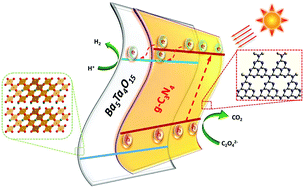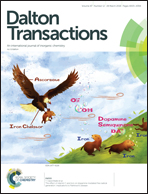In situ fabrication of two-dimensional g-C3N4/Ba5Ta4O15 nanosheet heterostructures with efficient charge separations and photocatalytic hydrogen evolution under visible light illumination†
Abstract
Separation of photo-generated electron–hole pairs plays a crucial role in determining the practical performance of semiconductor photocatalysts. Here we have successfully fabricated two dimensional g-C3N4/Ba5Ta4O15 nanosheet heterostructures through an in situ urea degradation method. The so-formed nanosheet heterostructures demonstrate superior photocatalytic activities in H2 evolution reactions over individual component. Further analysis using photoelectrochemical measurements suggests efficient charge separations at the interfaces of these heterostructures which contribute to a prolonged lifetime of photo-generated charges as well as the much enhanced photocatalytic activities. The in situ fabrication method adopted in this work ensures a firm anchorage of g-C3N4 onto Ba5Ta4O15 nanosheets and a face-to-face contact between these two semiconductors. Such a peculiar microstructure is critical to the high photocatalytic activity and apparently outweighs the conventional ones that involve only physical mixtures of two semiconductors and a point-to-point contact.



 Please wait while we load your content...
Please wait while we load your content...